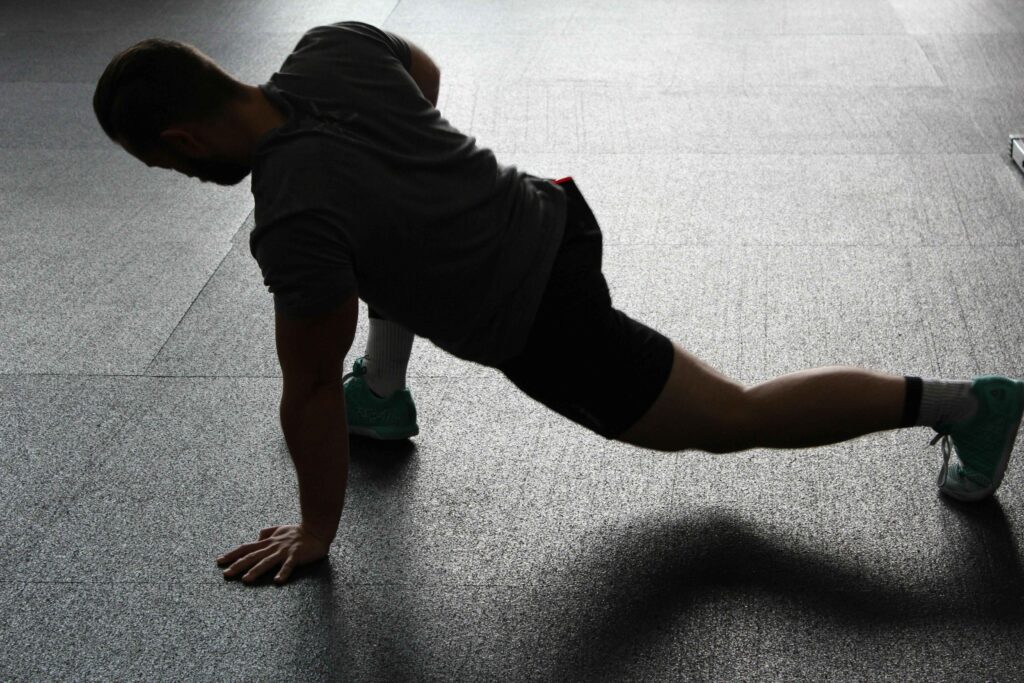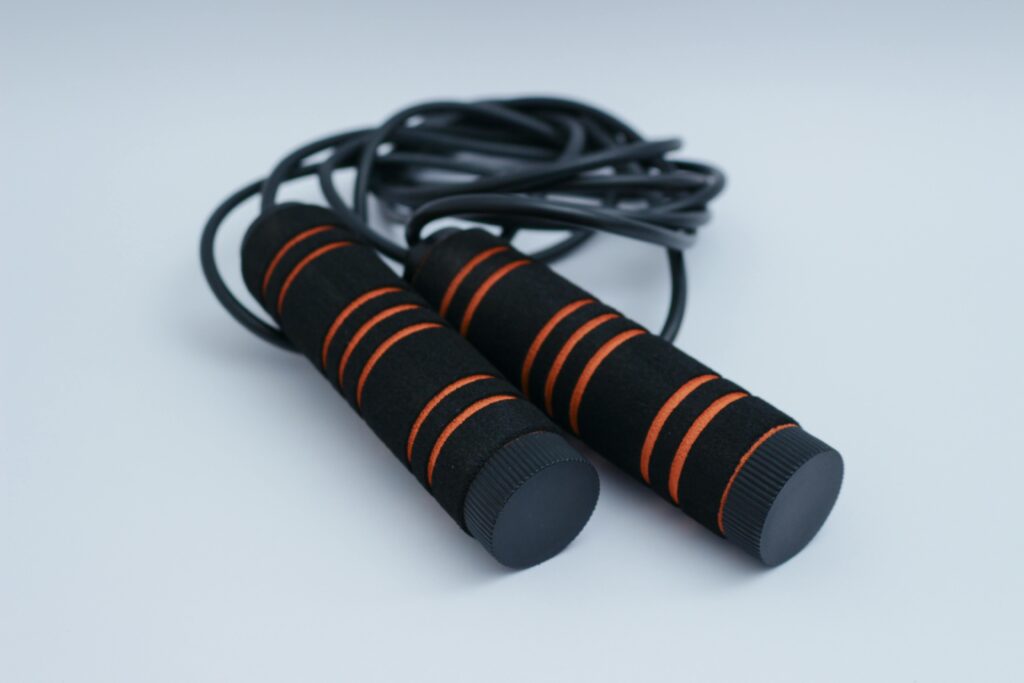Building Your Aerasiac Base
If you’re looking to build your aerobic base, then you may well have heard things like this: “I’m telling you, I’m telling you, you’ve got to run slow to go fast. Base building, bro! No, no, no, no nasal breathing only. Chill, man, chill. Just keep it aerobic, Aerobic Exercise keep it aerobic.” And you might be left wondering what all this actually means.
What is Your Aerobic Base?
Well, in this video, we’re going to break it down for you. So, in today’s video, we are going to be talking about how to build your aerobic base. And as somebody who’s completed everything from running a 4:58 minute mile to a double Iron Man distance Triathlon, let me just start by emphasizing just how important this is.
So, let’s start by addressing the obvious question: what is your aerobic base? Well, in simple terms, it is your ability to sustain steady-state work over a long period of time. Aerobic, quite literally, means with oxygen, whereas anaerobic means without oxygen. So, simply, aerobic training is utilizing your oxidative system. Thus, by improving your aerobic threshold, you’ll be able to go faster and longer with less blood lactate, which means less fatigue and ultimately a longer time to exhaustion.
Establishing Heart Rate Zones
Now, we need to establish our heart rate zones. Given that 99.9% of us don’t have access to lab-level data, here are three ways in which we can establish and work within some heart rate parameters, assuming you have access to a way of tracking your heart rate.
Method 1: 220 Minus Age
First of all, let’s consider the classic 220 minus age equals your max heart rate. We then take 50% to 70% of this to establish our aerobic training parameters. This is a bit limited Aerobic Exercise and generalized in the long term, but as a starting point for beginners, it’s a great way to establish some boundaries to operate within.
Method 2: Math 180
Next up, we have Math 180, which is a popular approach, but not one I’ve ever actually personally used. The premise is similar to 220 minus age, but in this case, it’s 180 minus age, plus a few modifications based on the MAF formula, which you can find information on online. This is better because there’s more data and information that underpin the formula, but again, it is largely generalized and therefore limited in the long term, in terms of establishing specific to you, the individual goals.
Method 3: Lactate Heart Rate Threshold Zones
Next up, we have lactate heart rate threshold zones, which are what I personally use, and what we’ve used with thousands of athletes all over the world at Omnia Performance. The test is simple: you run max distance for 30 minutes, and you take the average heart rate and average pacing for the final 20 minutes, and that will establish your heart rate threshold and your threshold pacing. We then take up to 89% of this to establish our aerobic zones, and therefore, we can set training zones accordingly. If we start to work in speed work or sub-threshold or tempo stuff, which we’ll come onto shortly, this obviously requires a certain level of running ability to begin with, which is why I’ve sort of worked through the tiers to this point.
What if You Don’t Have Access to a Heart Rate Tracking Device?
The question on some of your minds is probably, “Well, Fergus, what if I don’t have access to a heart rate tracking device?” Well, I have two things for you to consider. Number one is the talk test, which is simply to run at a pace at which you can maintain a consistent conversation. If you can’t maintain a conversation, then you’re running too fast. Simple as that.
Number Two: Nasal Breathing
Number two is to do your best impression of The Rock and focus on nasal breathing only. This can function as a really effective form of throttle control by holding you accountable to your current aerobic abilities. Again, if you can’t hold pace by breathing only through your nose, you’re running too fast.
Managing Recovery
Outside of training, we all know how important it is to manage things like nutrition, sleep, hydration, stress, workload, so to improve our overall recovery. And that is where Whoop can step in, as the world’s most comprehensive lifestyle tracker. It gives you feedback and data on sleep, strain, recovery, key health metrics, stress, and much more. With this information, you can take action to improve your day-to-day routines, habits, structures, so to better underpin your overall recovery and support your aerobic development.

The Importance of Recovery
The word recovery is heavily marketed at the moment, and I want to make crystal clear that Whoop doesn’t in any way suggest that it’s going to do the recovery part for you. Instead, I view it as a 24/7 convenient tracking tool, so that you can have all the information you need to better understand what’s good for you, what’s bad for you, and most importantly, take on those things to improve your day-to-day existence.
Building Volume
Point number four is on how to build your volume. It’s essential to not jump in at the deep end with your volume. Aerobic Exercise Now, I can’t be too prescriptive here, given I don’t know your individual training goals, but ideally, we don’t want to increase our total weekly Aerobic Exercise volume by any more than 10% at a time. So, to be measured, cautious, and reduce the risk of injury, research indicates that the biggest contributing factor to injuries in recreational athletes is a sharp spike in volume, too fast, too soon.
Avoiding Common Mistakes
When it comes to building your aerobic base, there are some mistakes that are often made. First of all is worrying too much about finding the perfect or the best running shoe, rather than just getting to work. If I had a pound for every single time somebody Aerobic Exercise has asked me this question, I would single-handedly be able to revitalize the current state of the British economy.
Believing You Can’t Run Slow
Secondly is assuming you’re easy. I’ve seen time and time again; I’ve done it myself that we can’t be trusted. We simply cannot, which is why it’s so important to establish clear heart rate parameters, like we’ve discussed earlier, so that you can be working within the right effort level.
It’s Not Impossible to Run Slow
Thirdly is believing that Fergus, it’s literally impossible for me to be able to run that slow. Is the case when, in reality, it probably isn’t. You’re probably just not used to the gate, the mechanics that go with moving at a slower pace. In ultras, I’ve been running up to about 13, 13 and a half minute per miles, and whilst, yes, it’s been more of a shuffle than a run, it’s still running.
Alternatives to Running
Or, if your heart rate capabilities actually don’t allow for you to be able to run, even if it is at the slower end of the spectrum, then walking, walking uphill, walking with Aerobic Exercise weight, whatever it might be, is a great way to build your aerobic base. As can be exercise bike alternatives, ski ergs, rowing machines, swimming, things like that, so that you can get your heart rate stimulus moving and ultimately build yourself to the point where you can build up your running volume.
There’s No Shame in Starting Slow
There’s no shame in that. There’s no shame in looking at where you are and looking at where you want to get to. The exciting part is the process, and the work that it entails in getting there. And that’s what this video is all about.
When to Add in Faster Workouts
So, the next question to address is when to add in faster workouts. Again, I can’t be too prescriptive here without knowing the context of the individual you that’s watching, but from a beginner’s point of view, let’s say that you’ve been doing base building, pure aerobic work for 12 weeks or so. It’s probably about now that you can start asking yourself the question, “When do I add in some faster stuff?”
Faster Workouts for Intermediate and Advanced Runners
If you’re an intermediate or advanced runner, you’re probably doing these things already, but let’s break it down. Faster work generally looks like intervals, tempo, sub-threshold work, or Fartlek training. And with the heart rate zones that we established Aerobic Exercise earlier, you can prescribe what paces and effort levels these specific faster sessions should be.
Adding Faster Workouts Cautiously
You can add these in slowly and cautiously, as I’ve hopefully stressed enough already. And it’s essential as well, at this point, to start really aligning the sessions that you’re doing with your training goals. Because the main thing with fitness, whether it’s running, triathlon, lifting, strongman, Tiddlywink Ing, or whatever it might be, is specificity.
Specificity of Training
I believe that the vast majority of us, in general terms, can make a huge amount of progress over a long period of time by following this simple template: one interval session, one tempo or sub-threshold session, and then one or two purely aerobic longer runs throughout the week. So, whether that’s three runs or four runs, that gives you a healthy dosage of different training stimuli across the week, which means that you’re developing your energy systems or while continually building

Swimming: Swimming is a low-effect cardio workout it is easy at the joints.
Cycling: Cycling is a low-impact cardio exercising that may be finished interior or exterior.
Yoga: Some styles of yoga, along with Vinyasa Flow or Ashtanga, can be changed to offer an aerobic workout.
Group Fitness Classes:
Spinning Classes: Spinning classes are organization fitness training that target cycling.
Zumba Classes: Zumba classes are high-strength aerobics lessons that integrate dance and music.
Boot Camp Classes: Boot camp training are excessive-depth aerobics instructions Aerobic Exercise that frequently incorporate electricity education.
Getting Started with Aerobic Exercise
If you’re new to cardio exercise, here are a few recommendations to get you started:
Consult with a Doctor: Before beginning any new exercising software, discuss with your physician, in particular if you have any underlying fitness situations.
Start Slow: Begin with brief, workable periods (20-half-hour) and regularly growth the duration and intensity.
Find an Exercise You Enjoy: Choose a cardio workout that you revel in, whether or not it’s on foot, running, swimming, or dancing.
Schedule It: Treat aerobic exercising as a non-negotiable part of your day-by-day routine, just like brushing your teeth or getting showered.
Track Your Progress: Use a health tracker, journal, or mobile app to tune your progress and stay prompted.
Tips for Staying Motivated
Vary Your Routine: Mix up your cardio exercise habitual to keep away from boredom and prevent plateaus.
Find a Workout Buddy: Exercising with a pal or member of the family can be a extremely good motivator.
Reward Yourself: Treat yourself to something exceptional after attaining a health milestone.
Focus on How You Feel: Remember that cardio exercising has many advantages Aerobic Exercise beyond physical look, consisting of advanced mood and extended electricity.
Make It Convenient: Find ways to include aerobic exercising into your day-by-day routine, along with taking the steps as an alternative

Specificity of Training
…continually building your aerobic base and realizing the gains on the faster stuff that is coming from the foundation of your aerobic threshold that you’ve raised through building your aerobic base.
A Simple Training Template
So, to go right back to the start, when we had person A saying, “Well, to go fast, you’ve got to run slow,” that’s where that point really comes to life. So, there we have it, six things to consider on how you can effectively build your aerobic base, which is ultimately the foundation of all fitness.
The Importance of Aerobic Capacity
The more that we can increase our aerobic threshold, the more that we can effectively recover from bouts of high intensity, the more that we can improve our recovery outside of lifting, all of the things that feed into general overall health, well-being, fitness are supported by our aerobic capacity.
Investing Time and Energy
So, if you haven’t already done so, it’s really worth Aerobic Exercise investing the time and energy into, guess what, building your aerobic base. And there are six points for you to work in and do exactly that.
Final Thoughts
So, if you do have any questions, drop them in the comments down below. Make sure that you have liked the video, please, and thank you. And if you haven’t yet done so, obviously hit the Subscribe button, because you’ve made it this far on the video, you’ve had six really insightful tips, and you’re keen to find out what happens next time. So, thank you very much for watching, and I’ll see you soon.

